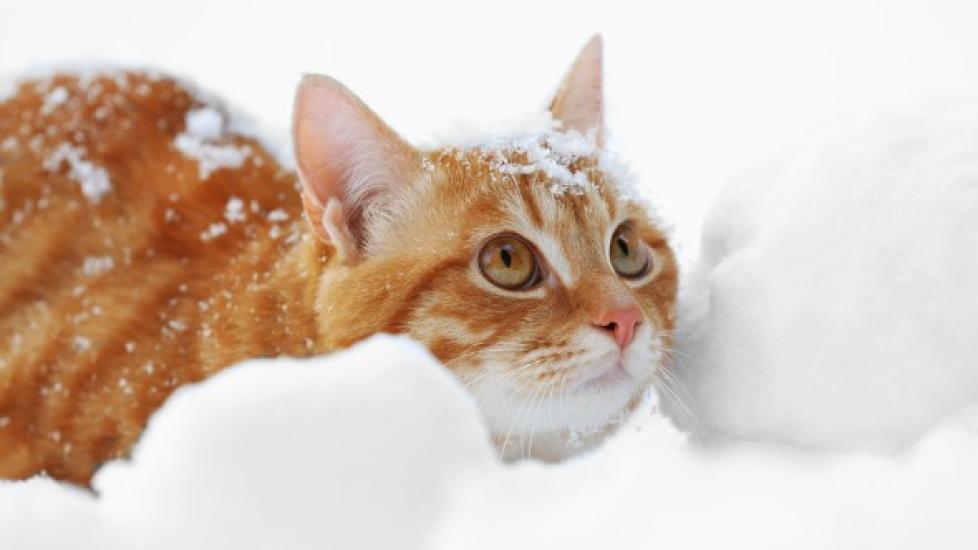Low Body Temperature in Cats
Hypothermia in Cats
Hypothermia is a medical condition that is defined as below-normal body temperature. It has three phases: mild, moderate, and severe. Mild hypothermia is classified as a body temperature of 90 - 99°F (or 32 - 35°C), moderate hypothermia at 82 - 90°F (28 - 32°C), and severe hypothermia is any temperature less than 82°F (28°C). Hypothermia occurs when an animal’s body is no longer able to maintain normal temperature, causing a depression of the central nervous system (CNS). It may also affect heart and blood flow (cardiovascular), breathing (respiratory), and the immune system. An irregular heartbeat, trouble breathing, and impaired consciousness to the point of coma may result.
Symptoms and Types
Hypothermia symptoms vary with the level of severity. Mild hypothermia is evident through weakness, shivering, and lack of mental alertness. Moderate hypothermia reveals characteristics such as muscle stiffness, low blood pressure, a stupor-like state, and shallow, slow breathing. Characteristics of severe hypothermia are fixed and dilated pupils, inaudible heartbeat, difficulty breathing, and coma.
Causes
Hypothermia usually occurs in cold temperatures, although newborns may suffer hypothermia in normal environmental temperatures due to lack of body heat. Smaller breeds and very young animals more prone to rapid surface loss of body heat are at higher risk as well, as are old (geriatric) pets. Animals under anesthesia are also at higher risk.
Other factors that may increase risk are diseases of the hypothalamus, the part of the brain that regulates appetite and body temperature, and hypothyroidism, a condition characterized by low levels of the thyroid hormone in the body.
Diagnosis
If hypothermia is suspected, your cat's body temperature will be measured with a thermometer, or in severe cases, a rectal or esophageal probe. Irregularities in breathing and heartbeat will also be checked. An electrocardiogram (ECG), which records the electrical activity of the heart, can be used to determine your cat's cardiovascular status.
A urinalysis, along with blood tests, is commonly used to diagnose alternative causes for below normal body temperature and unresponsiveness. These tests may reveal low blood sugar (hypoglycemia), metabolic disorders, primary heart (cardiac) disease. Blood and urine tests may also find unknown anesthetics or sedatives in your cat's system.
Treatment
Hypothermic animals are actively treated until a normal body temperature has been reached. Movement should be minimized, both to prevent further heat loss and to prvent a potentially deadly irregular heartbeat (cardiac arrhythmia) while the cat is being warmed. During re-warming, an initial drop in body temperature can be expected, as contact is made between warmer “core” blood and the cold body surface.
Mild hypothermia may be treated passively, with thermal insulation and blankets to prevent further heat loss, while moderate hypothermia requires active external re-warming. This includes the use of external heat sources, such as radiant heat or heating pads, which are applied to the animal’s torso to warm its “core.” A protective layer should be placed between the patient’s skin and the heat source to avoid burns. For severe hypothermia, invasive core warming is necessary, such as the administration of warm water enemas and warm intravenous (IV) fluids.
Further essential treatments, especially for severe hypothermia, include breathing aids, such as oxygen, which may be administered with a face mask, and IV fluids for blood volume support. Any fluids should be warmed first, to prevent further heat loss.
Living and Management
Throughout treatment, your cat's body temperature, blood pressure, and heartbeat should be monitored. It is also important to check for frostbite, another risk that may develop in cold temperatures.
Prevention
Hypothermia can be prevented by avoiding prolonged exposure to cold temperatures. This is especially important for at-risk animals. Factors that increase a pet’s risk for hypothermia include very young or old age, low body fat, hypothalamic disease or hypothyroidism, and previous anesthesia and surgery.
Sick or newborn animals with low blood sugar (hypoglycemia) are at risk for hypothermia even in normal environments. Long-term care may be necessary, such as incubation to keep the body temperature stable. To prevent hypothermia in anesthetized animals, the patient should be kept warm and its body temperature monitored after surgery.
Help us make PetMD better
Was this article helpful?
